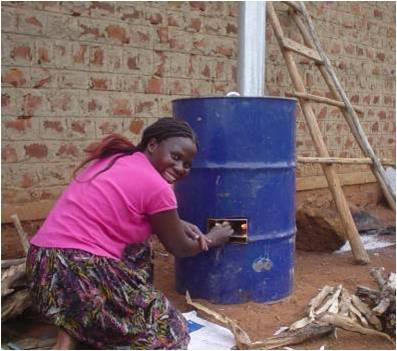
Melting point analysis is a very useful technique for the identification of a compound. If there are several possible compounds that you've synthesized but aren't sure which one is which, a comparison of the sample compound's melting point with established standards can help you determine what compound you have made.
Materials
- Small sample of unknown compound
- Melting point capillary tube
- Melting point apparatus (A Gallenkamp is pictured above)
Preparing the capillary tube

A capillary tube is a thin glass tube sealed at one end that holds the sample being analyzed.
- Dip the open end of the tube into the sample. It should fill to ~2 mm.
- Hold the tube so the open end is pointing up.
- Tap the tube on a hard surface until the sample packs into the closed end.
Using the melting point apparatus
The melting point apparatus has a thermometer, magnifying glass, and heating block with a hole for the capillary tubes to be inserted. It can usually heat up to 500°C.
Two trials are run, where the first trial is a test run to determine when to make a detailed observation of the melting. The second run will allow for greater precision as you will know what to expect.
There are two switches on the apparatus. One is for the boost heater, which rapidly increases temperature. This can only be turned on/off. The other is for a secondary heater, with the heating power controlled by a dial.
- Make sure all switches are off and make sure the temperature is no more than 50°C.
- Insert the melting point capillary tube.
- Turn the secondary heater on to full and check the sample through the magnifying glass to make sure you can see it.
- Turn on the boost heater.
- Watch for the sample to melt into liquid (usually accompanied by a change of colour). As soon as it does, record the temperature and switch the apparatus off.
- Allow the apparatus to cool to 40°C below the temperature you recorded.
- Insert the second sample.
- Turn on only the secondary heater and set it to a medium power.
- Record the melting point where it immediately starts to melt and record the range of temperatures it takes from the sample to start melting to completely finish melting.
- Turn off the apparatus and analyse the collected data.
Analysing the data
By comparing your experimental melting point with those in established scientific literature, you will be able to determine the identity of the sample out of a group of possible compounds.
The range of melting can provide a qualitative gauge of the purity of the compound. Impure substances usually melt over a wider range of temperatures and at a temperature lower than its pure counterpart.

